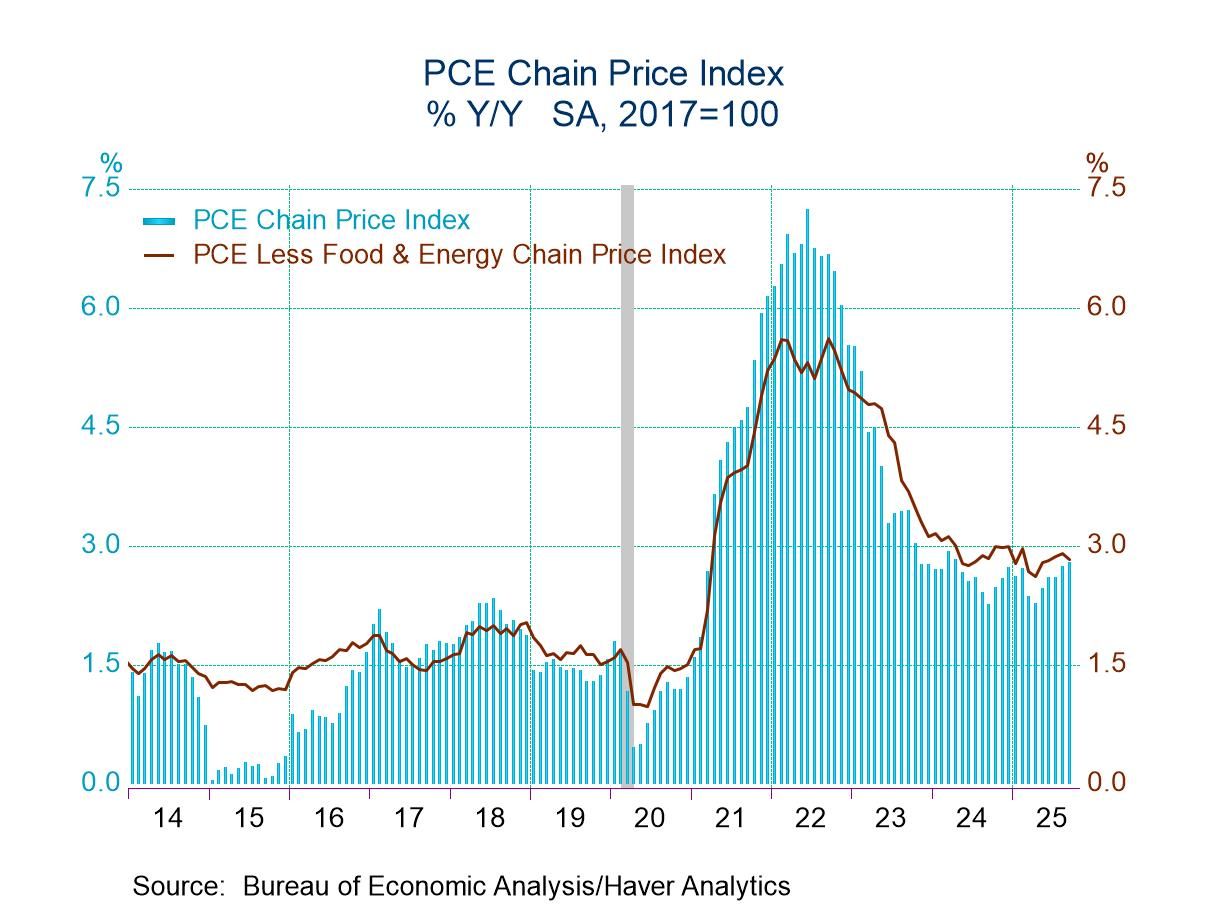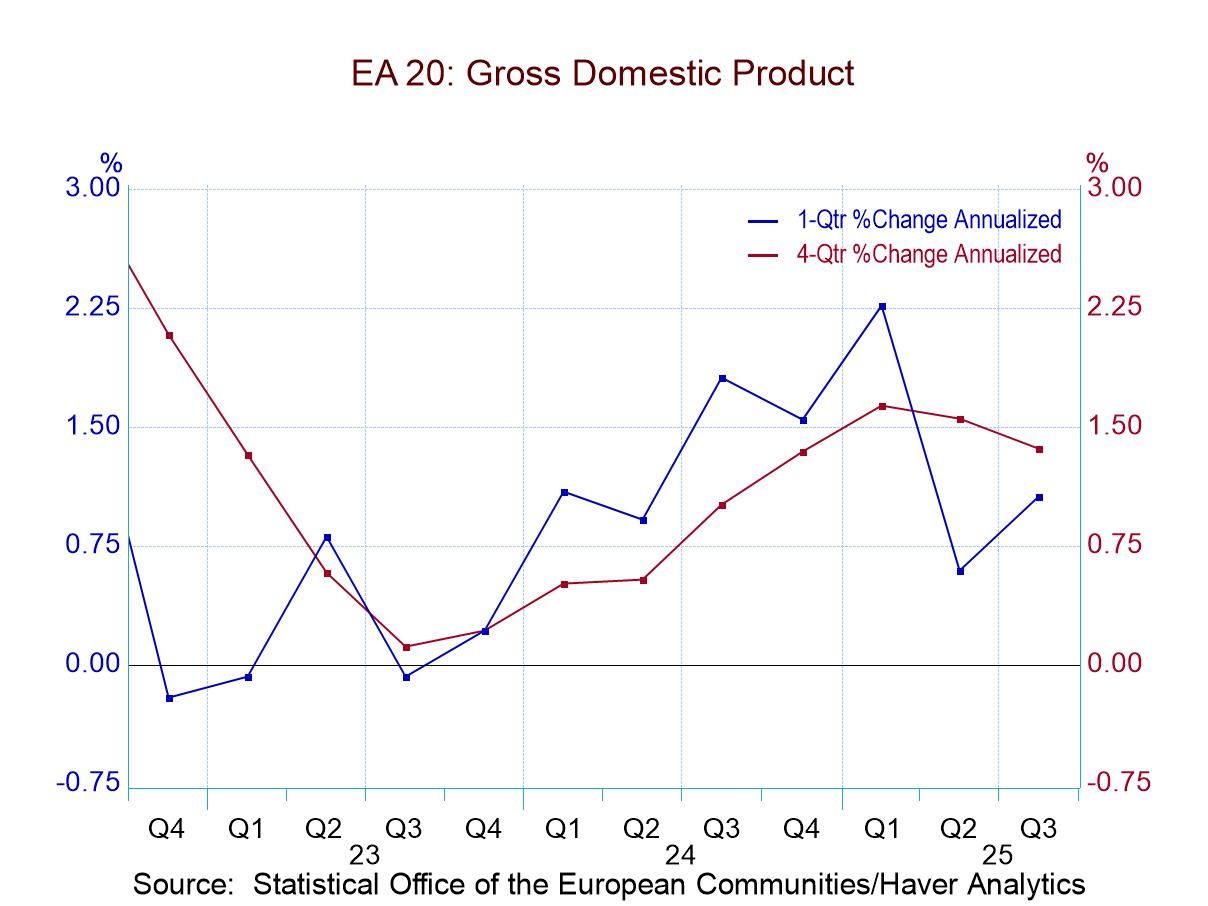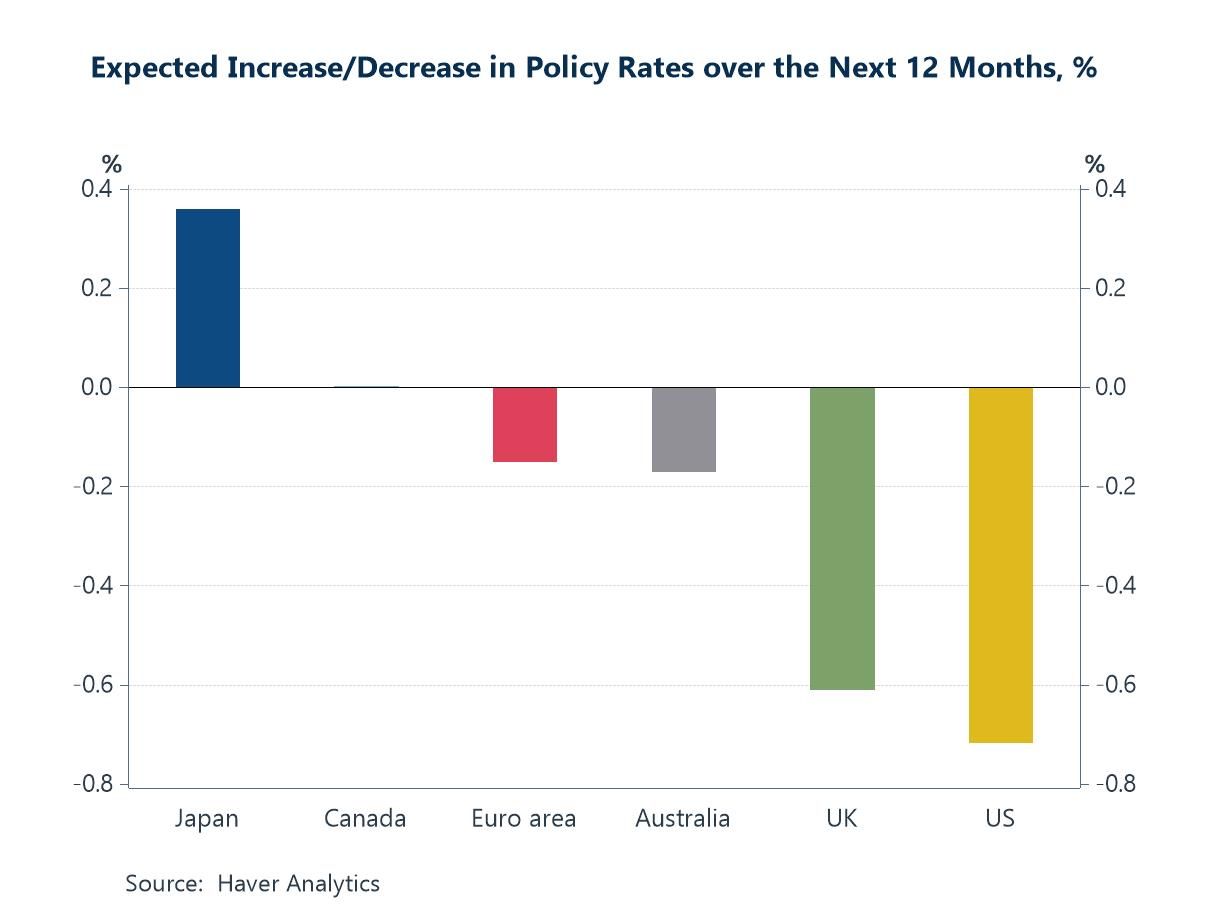U.S. Factory Orders Drop in April, the First M/M Decline Since November
Summary
- Headline: -3.7% m/m; +0.9% y/y, the smallest y/y gain in four months.
- Durable goods orders (-6.3%), nondurable goods orders (-0.9%), and shipments (-0.3%) all decrease m/m.
- Transportation equipt. orders -17.1% m/m, w/ a 51.5% plunge in nondefense aircraft & parts orders.
- Unfilled orders unchanged m/m vs. a 1.6% March jump.
- Inventories -0.1%, the first m/m easing since September.


Total factory orders fell a deeper-than-expected 3.7% m/m in April after rises of 3.4% in March and 0.5% in February, data from the U.S. Census Bureau showed. A 3.2% m/m April decline had been expected in the Action Economics Forecast Survey. The April reading was the first m/m fall since November and the deepest since January 2024. The year-on-year rate decelerated to 0.9% in April after rising to 4.9% in March (highest since November 2022), registering the smallest y/y pace since December’s 1.8% y/y drop. Notably, orders for nondefense aircraft & parts plunged 51.5% m/m in April after soaring 158.5% in March and dropping 10.2% in February. Factory orders excluding defense dropped 4.2% (+0.6% y/y) after a 3.9% March advance, posting the first m/m decline since October and the most since January 2024. Factory orders excluding the transportation sector fell 0.5% (-0.1% y/y) following a 0.5% March fall and four straight m/m rises.
Durable goods orders fell 6.3% (+3.2% y/y) in April, the first m/m fall since November and the deepest since January 2024, after a 7.6% rise in March (matching -6.3% m/m in the advance report on May 27). The April fall reflected m/m orders drops of 17.1% (the biggest m/m decline since January 2024; +6.1% y/y) in transportation equipment, 0.3% (+5.4% y/y) in electrical equipment, appliances & components, and 0.1% (-0.3% y/y) in primary metals. To the upside, the following durable goods orders rose m/m in April: computers & electronic products (1.0%; 2.9% y/y), fabricated metal products (0.9%; 2.6% y/y), machinery (0.6%; 2.7% y/y), and furniture & related products (0.1%; 2.3% y/y).
Nondurable goods orders, which equal nondurable goods shipments, fell 0.9% (-1.3% y/y) in April after a 0.7% decline in March and two successive m/m increases. The April fall reflected m/m drops of 5.9% (0.0% y/y) in leather & allied products, 4.6% (-14.4% y/y) in petroleum & coal products, 1.0% (-0.9% y/y) in textile mills, 0.6% (+1.3% y/y) in printing, 0.3% (+3.5% y/y) in chemical products, 0.3% (+1.4% y/y) in paper products, and 0.2% (+1.8% y/y) in textile products. To the upside, the following nondurable goods shipments rose m/m in April: apparel (2.8%; 3.0% y/y), beverage & tobacco products (0.5%; 5.3% y/y), and food products (0.2%; 1.4% y/y). Meanwhile, nondurable goods shipments for plastics & rubber products were virtually unchanged m/m (-0.1% y/y) in April after two consecutive m/m rises.
Total shipments decreased 0.3% (+0.6% y/y) in April following a 0.2% decline in March and four straight m/m gains. Excluding transportation, shipments fell 0.6% (-0.2% y/y) in April after a 0.3% March fall and two successive m/m increases. Shipments of durable goods industries rose 0.3% (2.5% y/y) in April, the fifth consecutive m/m rise, on top of a 0.2% increase in March. This reflected m/m durable goods shipments rises of 1.4% (4.7% y/y) in transportation equipment, 0.8% (1.4% y/y) in machinery, and 0.4% (5.6% y/y) in electrical equipment, appliances & components. In contrast, the following durable goods shipments fell m/m in April: wood products (-1.3%; -3.1% y/y), nonmetallic mineral products (-1.1%; -0.6% y/y), miscellaneous durable goods (-0.7%; +2.7% y/y), primary metals (-0.7%; -0.3% y/y), furniture & related products (-0.5%; +0.9% y/y), computers & electronic products (-0.2%; +4.3% y/y), and fabricated metal products (-0.1%; +1.4% y/y).
Unfilled orders held steady m/m (2.1% y/y) in April after a 1.6% jump in March and no change in the prior two months. Excluding transportation, unfilled orders were virtually unchanged m/m (+0.6% y/y) in April after a 0.2% decline in March. Backlogs of durable goods held steady m/m (2.1% y/y) in April, reflecting m/m rises of 0.6% (1.5% y/y) in furniture & related products and 0.2% (3.6% y/y) in primary metals, partly offset by a 0.3% decline (+0.5% y/y) in electrical equipment, appliances & components.
Inventories dipped 0.1% (+0.9% y/y) in April, the first m/m easing since September, after three straight 0.1% increases. Excluding transportation, inventories slipped 0.1% (+0.6% y/y) in April, down for the first time since September, after a 0.2% rise in March. Durable goods inventories rose 0.2% (1.2% y/y) in April after inching up 0.1% in March and holding steady in February and January, while nondurable goods inventories fell 0.4% (+0.3% y/y), the first m/m fall since October.
The factory sector data are available in Haver’s USECON database. The Action Economics Forecast Survey is in the AS1REPNA database.


Winnie Tapasanun
AuthorMore in Author Profile »Winnie Tapasanun has been working for Haver Analytics since 2013. She has 20+ years of working in the financial services industry. As Vice President and Economic Analyst at Globicus International, Inc., a New York-based company specializing in macroeconomics and financial markets, Winnie oversaw the company’s business operations, managed financial and economic data, and wrote daily reports on macroeconomics and financial markets. Prior to working at Globicus, she was Investment Promotion Officer at the New York Office of the Thailand Board of Investment (BOI) where she wrote monthly reports on the U.S. economic outlook, wrote reports on the outlook of key U.S. industries, and assisted investors on doing business and investment in Thailand. Prior to joining the BOI, she was Adjunct Professor teaching International Political Economy/International Relations at the City College of New York. Prior to her teaching experience at the CCNY, Winnie successfully completed internships at the United Nations. Winnie holds an MA Degree from Long Island University, New York. She also did graduate studies at Columbia University in the City of New York and doctoral requirements at the Graduate Center of the City University of New York. Her areas of specialization are international political economy, macroeconomics, financial markets, political economy, international relations, and business development/business strategy. Her regional specialization includes, but not limited to, Southeast Asia and East Asia. Winnie is bilingual in English and Thai with competency in French. She loves to travel (~30 countries) to better understand each country’s unique economy, fascinating culture and people as well as the global economy as a whole.






 Global
Global